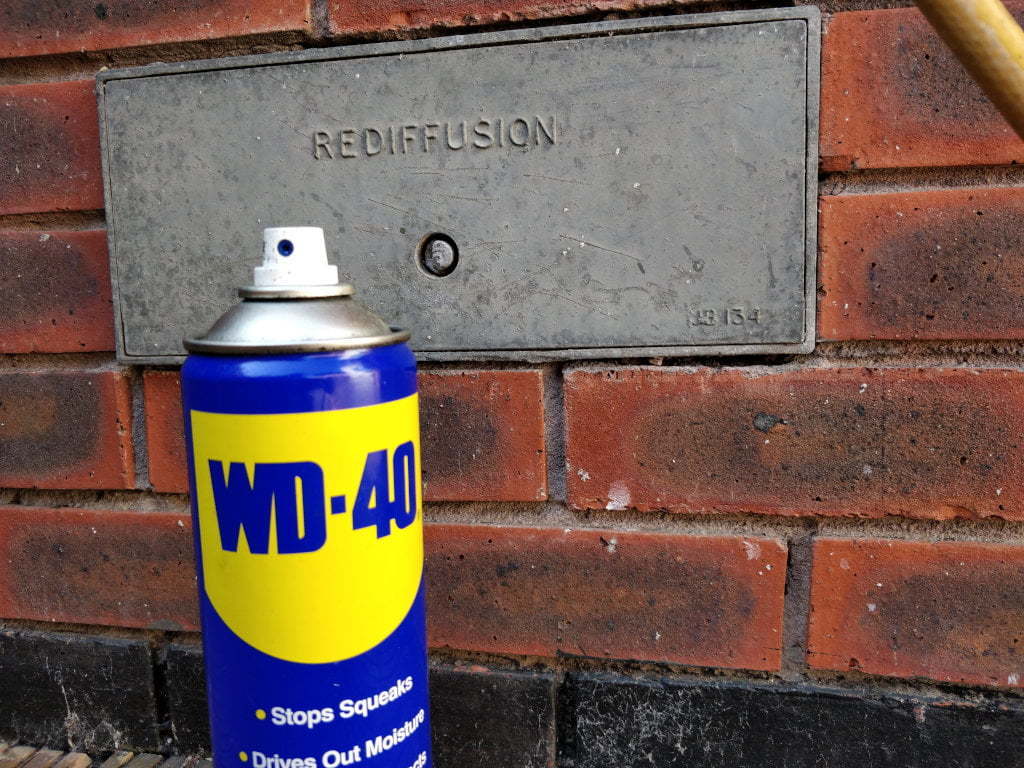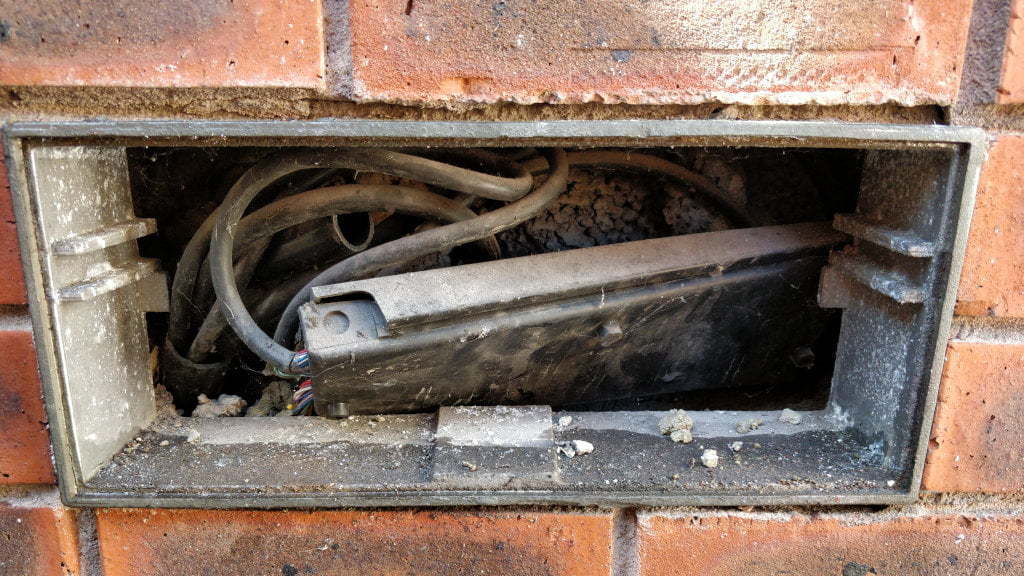Opening a Rediffusion Junction Box
Way back in the mists of time, the UK had a Cable TV service called Rediffusion. It had a long and noble history, but has been defunct for the best part of 40 years.
All technology leaves scars on the landscape. And Rediffusion was so popular, that it had junction boxes built into the walls of houses. When we moved into our new London home, I spotted this junction box hidden behind a plant pot.

That's a Rediffusion JB 134. There is no information about it on the web. Although this somewhat peculiar book talks about the JB166 - and indicates that it opens from the top.
A casual attempt with a pair of pliers had no effect. Time for the magic juice!

Lots of that sprayed into the hole. Wait a bit, and...
 It twisted open. Wanna see inside?
It twisted open. Wanna see inside?

Boxes within boxes, eh? Let's take it out.  It's marked Rediffusion JB 123.
It's marked Rediffusion JB 123.
Let's crack it open!

So many wires! Zoom! Enhance! Click to embiggen.
Each set appears to be 6 twisted pairs.
I guess one set goes to my left-side neighbour, and one set to the right. One set goes into the house. No idea about the others.
Apparently, there was a local community radio station - Radio Thamesmead which may have been available via this system.
On flickr, there's a photo of a Rediffusion van driving by the local train station back in the 1970s.
We may also have been able to have received Greenwich Cablevision.
And, that's really about all I can tell you. The wires appear to be in good condition. I didn't test to see if there was any signal on them (I hope not!). There doesn't seem to be a junction point that I can find inside our house.
I'm not sure who legally owns the cables - the deeds to the property don't mention them. And I'm not sure if removing them would cause any issues for the rest of the network.
So I've sealed it back up and will leave it for the next intrepid adventurer to discover.
If you know anything else about this system, drop a note in the comment box.


 Reducing GPS accuracy in photos
Reducing GPS accuracy in photos Thermal Imaging Our Home
Thermal Imaging Our Home
Had something like that in Ayrshire in the 80's, locally called the "Relay". Can remember watching a small start up channel called "Sky Channel" that only broadcast for a few hours per day. you needed to rent a box and plug it into the coax to "decode" the cable signals.
Paul Leader says:
That’s cool. When I was at university in York the TV station was run over what I believe was an old Redifusion network on the campus. You could see some of the channel selection switches on the walls. While I was there a couple of the more talented electronics engineers designed a a new bit of kit that repurposed the cabling with their own home-grown kit, replacing all the old stuff. It was the first time I’d encountered the concept of balanced line transmission.
I think that each of the twisted pairs was a seperate channel, but I’m quite rusty on the details.
Usual request: pleas put your pics on Wikimedia Commons
en.wikipedia.org/wiki/Wikipedia…
Used one here:
en.wikipedia.org/wiki/Rediffusi…
We had Rediffusion! We had a dial on the wall by the window where the cable came in to change the TV channels. See an example here https://hackaday.com/wp-content/uploads/2018/06/rediffusion-thumbnail.jpg And the TV set was rented. I remember having the Music Box channel in 1984 which was brilliant and predated MTV. I also have a vague memory of there being a tennis game on the TV without a console but I can't imagine how one moved the bat in order to play. I guess by then we may have had a clicker (remote control) and maybe it was single player and that you played the TV but I don't really remember.